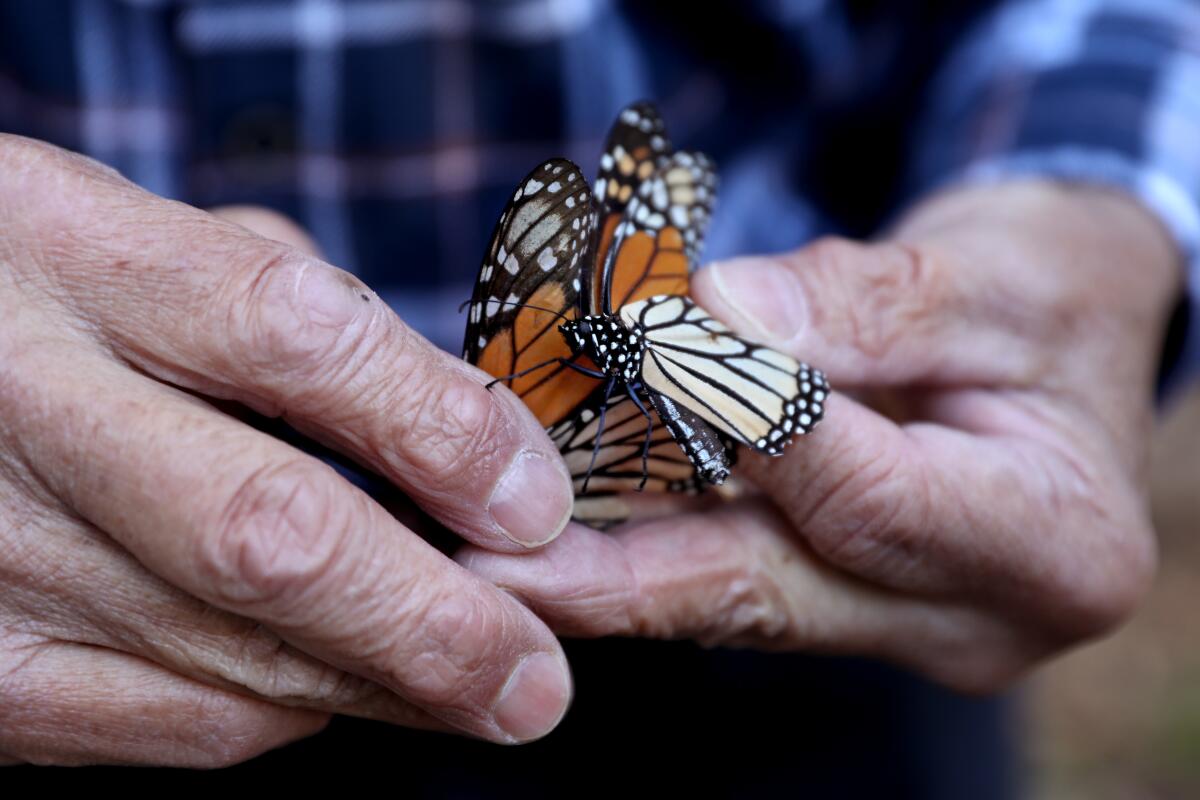Letters to the Editor: Turn your local park or golf course into a monarch sanctuary

- Share via
To the editor: Diana Marcum’s article on the resurgence of monarch butterflies in Central Coast communities has a titillating introduction to the sex lives of these insects. However, the real thrust of the article is many paragraphs deep, in the discussion of 82-year old Kingston Leong’s dedication to protecting California’s monarchs at a Los Osos preserve carved from a housing development.
If we want to protect and facilitate a future for these beautiful butterflies, we need more people to encourage local cities to plant butterfly habitats that include nectar flowers and milkweed, the only plant that monarch caterpillars eat, and the only plant where monarchs lay their eggs.
Local parks and golf courses are ideal places to create milkweed habitats for these precious butterflies that are a gift of hope to the world. Let’s get our cities going on this key to fostering a future for our fetching, fascinating, floating friends.
Pamela Carrie, Laguna Niguel
..
To the editor: The monarch butterflies have not “recovered,” nor are they “back.” Monarchs and all insects are in the midst of an apocalypse.
As the Xerces Society for Invertebrate Conservation stated, there were 247,000 monarchs overwintering in California during its last Thanksgiving count. The previous year, that number was less than 2,000.
But since the 1980s, the monarchs and other insects have been in deep decline. Do we know why? No, we don’t. This number of 247,000 is a one-year count. We don’t know if this will be a trend or just a blip.
And the monarchs are not here to “give a sense of optimism.”
Mary Montes, West Hills
..
To the editor: Lovely article, but please, in future reports on monarch butterflies, clarify that the native milkweed is what they are adapted to, and that the non-natives — available at far too many nurseries — are harmful to plant.
Yes, the butterflies will use the non-native plants, but they do not protect the butterfly in the same way and can interrupt their migration patterns.
Christopher Brothers, San Diego
..
To the editor: Butterflies mating on the front page of The Times — I don’t know if I should be appalled or excited.
Bernadine Bednarz, Los Angeles




